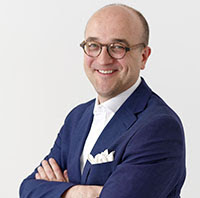| |
 |
Saint Elizabeth of Hungary bringing food for the inmates of a hospital,
Painted by Adam Elsheimer (1578-1610),
Oil on panel,
Painted in 1598
© Welcome Collection |
There was one of the Pharisees called Nicodemus, a leading Jew, who came to Jesus by night and said, ‘Rabbi, we know that you are a teacher who comes from God; for no one could perform the signs that you do unless God were with him.’ Jesus answered:
‘I tell you most solemnly, unless a man is born from above, he cannot see the kingdom of God.’
Nicodemus said, ‘How can a grown man be born? Can he go back into his mother’s womb and be born again?’
Jesus replied: ‘I tell you most solemnly, unless a man is born through water and the Spirit, he cannot enter the kingdom of God: what is born of the flesh is flesh; what is born of the Spirit is spirit. Do not be surprised when I say: You must be born from above. The wind blows wherever it pleases; you hear its sound, but you cannot tell where it comes from or where it is going. That is how it is with all who are born of the Spirit.’ |
|
|
| | Reflection on the Painting
In today’s reading we hear of Nicodemus approaching Jesus at night. Night time can indeed be a good time to pray. A busy day has finished and we can gather our thoughts. For many of us, in these days of the pandemic sweeping through the world, the days feel like nights, and the nights like days. I want to briefly reflect however on some images I saw last night of hospital wards and tragic scenes of suffering. Whilst we pray every day for all the doctors, nurses and hospital staff, it reminded me of this painting I am sharing with you today. It shows Saint Elizabeth of Hungary (1207–1231) attending to some patients inside a 16th century hospital. After her husband’s death, Saint Elizabeth gave away her worldly possessions and turned the income from her dowry over to the building and running of a hospital in Marburg, Germany. Early hospitals were not necessarily medical institutions as we know them today, but places for the Christian care of the sick, the poor and the aged. Saint Elizabeth, depicted with a halo, is seen offering a bowl of food and a tankard of drink to a man who sits up in bed. A large statue of the Virgin and Child is mounted on one of the end walls.
Whilst we as a society all share responsibility in caring for the sick, it is interesting to note that the Catholic Church is the largest non-government provider of health care in the world. It has around 18,000 clinics, 16,000 homes for the elderly and those with special needs, and 5,500 hospitals, with 65 percent of them located in developing countries. In 2010, the Church’s Pontifical Council for the Pastoral Care of Health Workers said that the Church manages 26% of the world’s health care facilities. Again, health care is a shared responsibility of society as a whole, but I think these are interesting statistics to share.
Christ himself instructed his followers to heal the sick. The early Christians were known for tending to the sick, poor and infirm, which developed soon into structured nursing and hospital infrastructure. The Benedictine rule holds that "the care of the sick is to be placed above and before every other duty, as if indeed Christ were being directly served by waiting on them”.
Let us pray for all the health workers today, that God may bless their work and efforts.
by Patrick van der Vorst |  | |
|
|
|
No comments:
Post a Comment